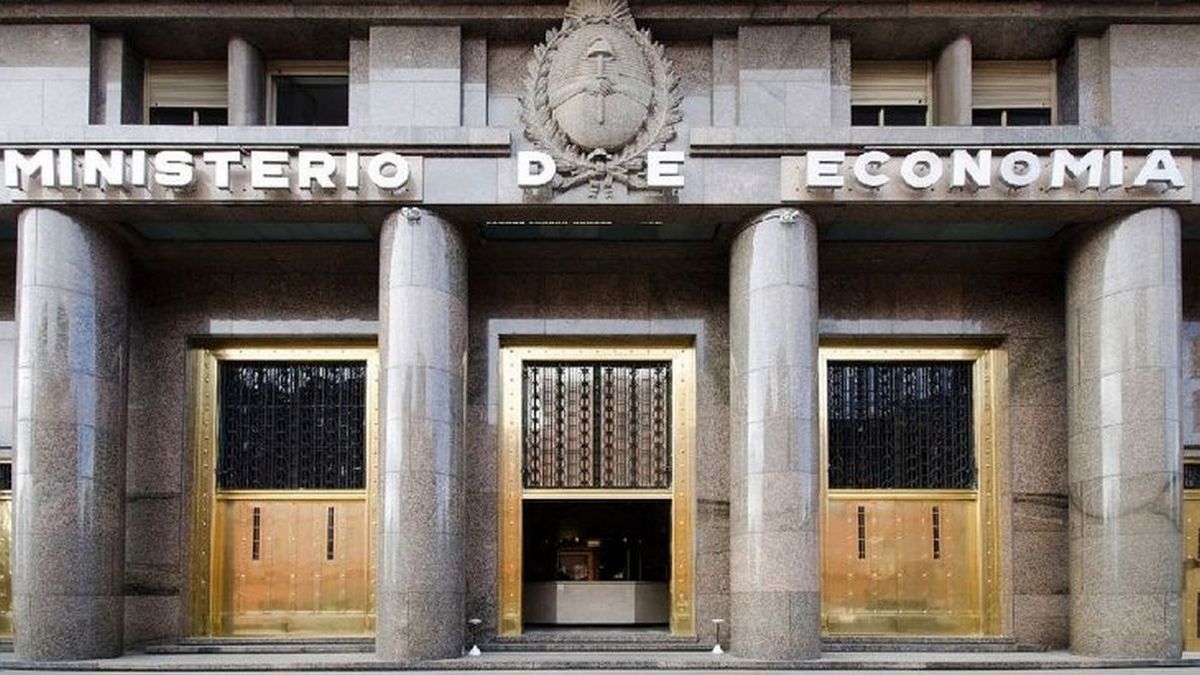For the first time since the beginning of the current administration, the Ministry of Economy could not renew all of the debt maturities in pesos that it faced. It was this Wednesday, at last tender of september. There, he received offers from the market for an amount much lower than the payments to be made. Even so and despite validating a slight rate increase In the shorter letters, the team Luis Caputo decided not to award everything offered. The result: renewed only 67% of the $7.1 billion that expired.
In this way, the Ministry of Finance released $2.32 billion into the market. The official argument is that this corresponds to an increase in the demand for money since banks need to earn pesos to supply credit to their clients. The Minister of Economy had already opened the umbrella on a possible partial renewal before the previous tender, in which that ultimately did not happen.
The analysts They consider that this will not cause stress in the market, but They keep the doubt open regarding where the non-refinanced pesos will go with an economy that does not grow. For now, the non-renewed portion of the maturities will be paid with a part of the large deposits that the Government has in the Central Bank at a zero rate. In fact, This will imply monetary expansion equivalent.
Debt: the details of the tender
Specifically, Finance received offers totaling $5.76 billionthat is, $1.34 billion less than what was due. Even so, it decided to award a smaller amount ($4.78 billion). What is striking is that, in any case, it was necessary to validate a slight increase in rates in the shortest section of the Lecap (fixed rate bills) with respect to the previous auction.
31% of what was placed was concentrated in the shorter Lecap, which expires on October 31 and has barely a month long. For this title, it will pay a cut-off monthly effective rate (TEM) of 3.75%, the same as what had been validated in the previous tender for a bill as of December. Furthermore, the bulk of the rejected offers corresponded to this instrument, which shows that demand turned strongly to the very short term.
Then, it awarded $610,000 million in a Lecap to January 2025 at 3.95% TEM, $180,000 million to February with TEM of 3.94%, $200,000 million to March with TEM of 3.97% and $440,000 million to April with TEM of 3.95%. In the previous tender, it had paid 3.9% for letters in February, March and April.
Likewise, it placed $310,000 million in a Lecap in May with a TEM of 3.95% (same level as in the previous auction), $330,000 million in July with a TEM of 3.98% and $460,000 million in September with a TEM of 3.98%. (in the previous tender I had paid 3.95%).
Outside of the Lecap, it awarded $540,000 million at a real interest rate of 0% in the TG25 bond, a title that adjusts for CER (inflation) and that banks can use to integrate reserve requirements.
Finally, it placed $160,000 million in the Boncer TZXD5 (also indexed to inflation) with a real annual interest rate of 10.53% and $50,000 million in the TZXD6 (Boncer as of December 2026) real rate of 10.96%.
Tender: where will the released pesos go?
After publishing the result of the tender (four hours after the auction closed), the Government argued that the low percentage of renewal of maturities is a positive fact about the progress of the economic plan.
“The process of remonetization in pesos of the economy planned since the beginning of the program has already begun and implies a return of resources from the public sector to the private sector in an unprecedented situation for our country. This manifests itself in a increase in loans in pesos to the private sector of 46% and of the monetary base of 51%, both in real terms from the end of April to the end of August,” said the Secretary of Finance, Pablo Quirnoin your X account.
And he added: “Consequently, banks have a greater demand for liquidity that leads them to reduce their financing to the public sector to sustain the expansion of private credit for families and companies.”
“We will see in the coming days how much of this happens or where the pesos can go,” said the financial analyst. Christian Butler in dialogue with Scope. And he indicated that this “does not cause stress in the market” because the Treasury had already planned the pesos deposited in the BCRA to cancel the payments and because since they were banks, those that did not renew would not immediately go to the dollar.
Although he clarified: “In an economy that still does not seem to be growing at all, we really have to see where the pesos end up going.. “We have to see if the banks are having greater demand for credit or if it is a change from Lecap to repos (LEFI), a portfolio change for the last quarter of the year.”
Other City operators consulted by this means considered that the Economy strategy, by validating a slight increase in rates despite not renewing the entire maturity, responds to the search to enhance the carry tradewith yield in pesos much higher than the 2% monthly devaluation, with the aim of trying to sustain the exchange rate scheme despite having negative net reserves.
Source: Ambito




